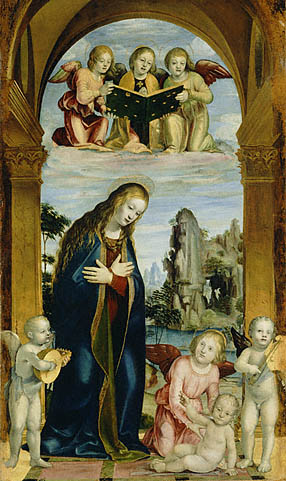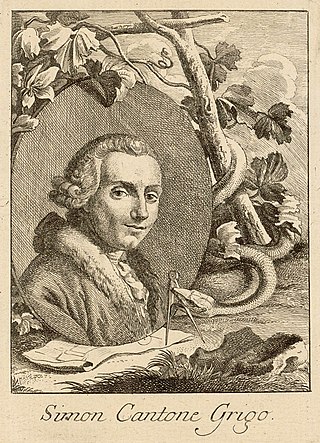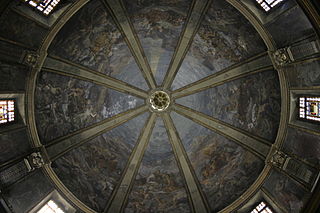
Santa Maria delle Grazie is a church and Dominican convent in Milan, northern Italy, and a UNESCO World Heritage Site. The convent contains the mural of The Last Supper by Leonardo da Vinci, which is in the refectory.

Giuliano Bonfante was an Italian linguist and expert on the language of the Etruscans and other Italic peoples. He was professor of linguistics at the University of Genoa and then at the University of Turin.

BernardoZenale was an Italian painter and architect.

Ferdinando Galli-Bibiena, surname also spelled Galli da Bibiena or Bibbiena, was an Italian Baroque-era architect, designer, and painter.

Ottone Visconti was Archbishop of Milan and Lord of Milan, the first of the Visconti line. Under his rule, the commune of Milan became a strong Ghibelline city and one of the Holy Roman Empire's seats in Italy.

Eleuterio Pagliano was an Italian painter of the Romantic period as well as an activist and fighter of the Risorgimento.

Antonio Calza (1658–1725) was an Italian painter of the Baroque period.

Bartolomeo Nazari was an Italian painter of the late-Baroque, mainly active in Venice as a portraitist.

Giocondo Albertolli was a Swiss-born architect, painter, and sculptor who was active in Italy during the Neoclassical period.

Luca Beltrami was an Italian architect and architectural historian, known particularly for restoration projects.

Giovanni Raboni was an Italian poet, translator and literary critic.

Benedetto Innocenzo Alfieri was an Italian architect, a representative of the late-Baroque or Rococo style.

Simone Cantoni was a Swiss architect of the Neoclassical period, active mainly in Northern Italy.

Agostino Comerio was an Italian painter, active mainly in Northern Italy.

Francesco Corneliani (1740-1815) was an Italian painter, mainly active in a Neoclassic style in his native Milan.
Silvio Cosini was an Italian sculptor and stuccoist, mainly active in Florence. His works were in the style of Michelangelo, though he was trained by Andrea Ferrucci in Florence. Ferrucci obtained for him his first independent commission was in 1522, and included the decoration of the tomb of Raffaello Maffei in San Lino at Volterra. He usually worked in collaboration with other artists, including his brother Cosini.

Giuseppe Sciuti was an Italian painter.

Francesco Ratti was an Italian engraver.

Elia Lombardini was an Italian engineer and senator.
Arnulf I, known as Arnulf of Arzago, was the archbishop of Milan from 970 to 974.
This page is based on this
Wikipedia article Text is available under the
CC BY-SA 4.0 license; additional terms may apply.
Images, videos and audio are available under their respective licenses.

















